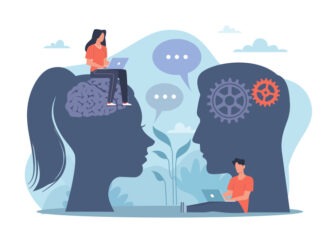
Social and emotional learning provides a guide for what schools can do to help students and teachers perform at their best – here’s how to use it
CREDIT: This is an edited version of an article that originally appeared on Edutopia
There have been reports about higher-than-usual numbers of teachers leaving or strongly considering leaving their jobs. At the same time, the mental health of students is characterised by high rates of anxiety and depression.
Would it surprise you to know that there is a common approach to helping schools retain teachers, help teachers to be motivated to stay in their jobs, and improve the mental health of our youth? It involves listening to what social and emotional learning (SEL) is telling us now.
That is not the same as teaching an SEL program or carrying out SEL curriculum activities. While these are valuable, they are not what is most needed now. The extensive research on SEL points to what is necessary for us to function at our best, learn to our capacity, and relate to those around us in satisfying ways.
Here are specific actions that SEL is telling us to engage in that will make our time in schools better.
We need to be seen and heard
Everyone needs to be recognised and called on each day they are in a school. This is why morning meetings and morning classroom conversation activities are so important—all students get airtime at least at the start of the day.
It’s equally valuable for staff to have daily opportunities to confer with one another or supervisors.
We need to contribute
Everyone needs to feel that they did something helpful during the school day—in the classroom, in a small group, to peers, to colleagues. We want to be able to come home from school and look back on something we did that made a positive difference to someone else or a project or activity.
We need to be reassured and have optimistic future-mindedness
No one likes being in a setting characterised by gloom and doom or predictions of failure or irretrievable learning loss or unrecoverable mental health.
No matter what is happening in the wider world, educators must deliver the message that this classroom and this school can and will be places that are positive and growing.
Communicate that the glass is half full, even a quarter full—and filling up—to encourage optimism and fuel motivation. Seeing oneself as being in an oasis is better than seeing oneself as part of an endless desert.
We need to be understood with empathy and compassion
It’s realistic to assume that we are in trauma, beset by strong emotions and worries. Speaking with students and parents, there isn’t anyone who is not touched either closely or strongly by trauma. Most of this is directly or indirectly related to COVID.
But many are upset by social trends—regardless of what side of the issues one finds oneself on.
There are many sources of anxiety and depression all around us, and it’s wise to act as if all students and staff are carrying out their roles as learners and educators in highly emotionally charged states. This should lead automatically to many adjustments in our interactions, including the following two.
We need to receive and give caring, kindness, help, and appreciation
When our emotions are in a frail state, we need more support. This does not represent some individual weakness or failing. SEL is telling us that it’s a universal human need and if it’s not met, we cannot expect people to thrive.
Teachers, as classroom leaders, and school business leaders, must ensure that there are stated norms for everyone to both give and receive kindness, help, and caring with others and to express appreciation for help or courtesies both large and small. The benefit of the doubt should be handed out liberally.
We need to have things repeated to us patiently and caringly, even though we should have heard them before
Under conditions of heightened emotionality, strong feelings distract us from careful listening. Teachers who have said something to students five times should not be surprised that some appear to be hearing it for the first time, if that. The same is true for administrative directives to staff.
Psychologist George Albee, PhD, who advised several presidential administrations on mental health in a distinguished career from the 1950s to 2001, made an observation that has only proven to be truer over time: We will never treat our way to mental health. We will get there by making the key settings in people’s lives places that help them grow, thrive, and feel secure and cared for. Schools are among the most essential of these places.



Be the first to comment